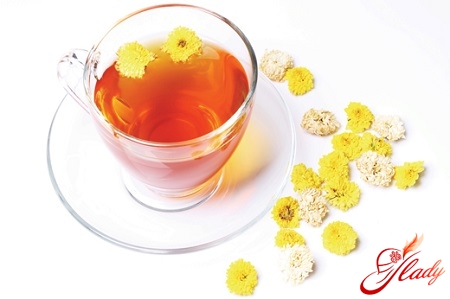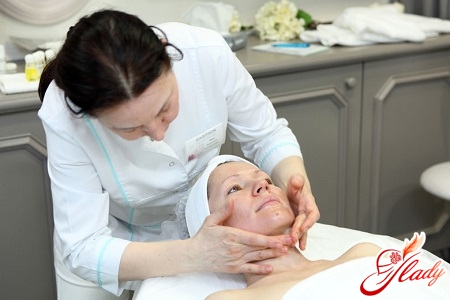
Bronchitis is an infectious disease,сопровождающаяся диффузным легким воспалением бронхов. И основной симптом этого заболевания представляет собой кашель. Тогда когда заболевание длится меньше трех недель, то уже можно говорить об остром бронхите. Тогда, когда симптомы бронхита выявляются не меньше 3-х месяцев в течение всего года и продолжается 2 года и более, можно смело устанавливать диагноз хронического бронхита. Но это при условии, что у человека нет каких-либо заболеваний бронхопульмональной системы или ЛОР-органов, которые и могли бы вызывать такие симптомы. При хронических бронхитах кашель с выделением скудной мокроты и проявление одышки при любой физической нагрузке вполне могут быть стать постоянными симптомами, которые будут сопровождать пациента на протяжении всей его жизни. В таком случае об обострении такого бронхита утверждают, когда отмечается заметное усиление вышеуказанных симптомов: усиленность кашля, увеличивается объем отделяемой мокроты, усиливается одышка, повышается температура тела и т.д. Любой бронхит, особенно острый, весьма редко протекает изолированно. Зачастую он сочетается с появлением ринита, другими словами насморка, трахеита и другими подобными симптомами. Такое состояние сказывается и на общей клинической картине. Если возникновение болезни сопровождается одышкой, то здесь можно говорить и об обструктивном бронхите. Причиной хронического бронхита может стать бактериальная, атипичная или вирусная флора. Основными бактериальными возбудителями бронхита являются стафилококки, стрептококки и пневмококки. Возбудителями бронхита вирусной природы считаются вирус гриппа, инфекция респираторно-синцитиального типа, аденовирус, парагрипп и т.д. Редко, но встречаются случаи, когда причиной бронхита является грибковая инфекция. Встречаются случаи, когда имеет место сочетание разных возбудителей. Например, заболевание может начаться как вирусная инфекция, а потом к нему могут присоединиться возбудители бактериальной природы. И при всем при этом вирусы как будто отворяют ворота для различных бактерий, создают самые благоприятные условия для их скорого размножения. Подобный вариант течения считается наиболее распространенным, что всегда подтверждается быстрым подъемом заболеваемости именно в осенние и зимние периоды времени, в то время когда наблюдается сезонное распространение различных вирусных инфекций. Лечебные мероприятия, проводимые при хроническом бронхите, почти во всем определяются клинической формой заболевания и особенностями его течения. Общей классификации хронического бронхита нет. В современной медицинской практике целесообразно применить следующую классификацию. По этиологии бронхит может быть бактериальный, вирусный, микоплазменный, от воздействия разных химических и физических факторов, пылевой. По признаку воспалительного процесса бронхит бывает катаральным, гнойным, катарально-гнойным, фибринозным и геморрагическим. По своим функциональным изменениям необструктивным, обструктивным. Если наступило обострение хронического бронхита, то это может дать дыхательную (легочную) недостаточность, эмфизему легких. В некоторых случаях может развиться бронхоэктаз. Симптомы этой болезни всегда одинаковы.

Health food
People who have chronic bronchitis,Treatment is recommended to begin with a balanced diet with sufficient vitamins. It is advisable to include raw fruits, vegetables, natural juices, and yeast drinks in your diet. In chronic bronchitis with the release of a huge amount of sputum, there is a rapid loss of protein, and in decompensated pulmonary heart disease, the loss of albumin in the direction from the vascular bed directly into the intestinal lumen may increase. Such patients are greatly helped by a diet rich in protein and intravenous drip transfusion of albumin, amino acid preparations such as polyamine, alvezin, and neframin. When chronic bronchitis occurs, treatment is based on diet No. 10, which limits energy value, the amount of salt, and liquids with a high potassium content.
Features diet, lifestyle in bronchitis
In case of a sharp exacerbation of bronchitis, it is traditionalIt is recommended to drink plenty of fluids. For adults, the daily volume of liquid consumed should be at least 3-4 liters. Often, alkaline fruit drinks are well suited for such patients, preferably hot milk with the addition of Borjomi in a percentage ratio of 1:1. The diet during the day should contain a normal amount of proteins, multivitamins. Against the background of a fairly high body temperature and general intoxication of the body, you can fast a little (but only if the body requires it), and in general, various restrictive diets are contraindicated for such patients. Quite high efficiency is shown when using inhalations with a nebulizer. And for the solution for such inhalations, you can quite use ordinary mineral water, medical saline solution or Ringer's solution. Such procedures are performed 2-3 times a day, and the course of treatment is from 5 to 10 days. The above manipulations promote the discharge of sputum, help to facilitate the drainage of the bronchial tree, and significantly reduce inflammation. For such patients, it is extremely necessary to adjust their lifestyle with the main goal of eliminating risk factors that cause infectious diseases of the upper respiratory tract. And first of all, this usually concerns smoking and various types of occupational hazards, such as dusty production, work with paints and varnishes, frequent hypothermia. The use of breathing exercises, for example, according to the Strelnikova method, has an excellent effect in chronic lung diseases. Such treatment also concerns chronic bronchitis. Without exacerbations of bronchitis, you can do general hardening measures.
Treatment of chronic bronchitis with the help of folk remedies
A very popular folk remedychronic bronchitis are steam inhalations. For this purpose, it is recommended to breathe in the steam that is formed when boiling potatoes and other foods. Some people find this method helpful if used carefully, but often its use can cause burns to the mucous membranes and subsequently worsen the condition. Chronic bronchitis can also be treated with herbal infusions. The following herbs are usually used for this: thyme and oregano, licorice and coltsfoot, linden, and plantain. To properly prepare the decoction, pour 1 tablespoon of the prepared mixture with ½ liter of boiling water and let it brew for 2 hours. Take one third of a glass three times a day. The duration of such treatment is from 1 week to 10 days. This method is really effective only in combination. Kumiss and goat's milk are no less effective. During treatment, it is recommended to consume at least 1 glass, at least 3 times daily. The course of such treatment is 2 months. You can also use another method. For this, you will need onion and honey, take it in the amount of 1 to 1, mince. Use according to the following scheme: a tablespoon - twice a day, the duration of intake from 10 days to 2 weeks. Sometimes instead of onion, you can use fresh garlic.
Bronchitis during pregnancy
Symptoms of chronic bronchitis in pregnant womendo not differ much from bronchial symptoms in any other patients. And the main symptom of bronchitis is a cough. But in such treatment there are a number of features, since many medications are prohibited for use during this period of life due to their negative impact on the fetus. For example, the use of tetracycline, streptomycin and chloramphenicol derivatives is prohibited. Euphyllin should be used with special caution. Of the antibacterial drugs permitted by modern medicine, vilprafen can be noted. It is a drug with a high safety profile and normal antibacterial activity. Inhalation therapy is allowed for pregnant women.
Prophylaxis of chronic bronchitis
Modern medicine identifies several methods for preventing this infectious disease.
- Consumption of immune-boosting drugs andcomponents in the seasons of possible exacerbation, which include autumn and winter. This method is most suitable for patients with chronic bronchitis or with frequent exacerbations of acute bronchitis. The drugs bronchomunal, ribomunil, IRS-19 gave an excellent effect in this regard. The schemes of administration and dosage are determined only by the attending physician. Non-specific immunocorrection options include regular intake of multivitamin complexes.
- Vaccination of patients.Given the high prevalence of pneumococcal infection, as well as its huge contribution to the emergence of this disease, most doctors recommend that patients at risk always get vaccinated with the PNEVO-23 vaccine, which provides immune protection against this type of pathogen. The effect of this vaccination lasts for five years. Also, taking into account the fact that viruses and viral infections are most often the trigger for the appearance of bronchitis, annual vaccination of people at risk is recommended. Who belongs to this risk group? First of all, it includes people over 50 years old, and those patients who suffer from chronic diseases of internal organs, such as the heart, lungs, kidneys, etc. Traditionally, women planning a pregnancy and those whose professional activities are associated with close contact with people - these are medical workers, teachers, sellers - have begun to be vaccinated. Vaccination is mandatory for those who have been taking anticoagulant drugs for a long time, which include acetylsalicylic acid, warfarin, etc.
- Strict adherence to simple basic techniques of personalhygiene, for example, frequent hand washing, using disposable tissues for the nose - this is a very simple method of preventing such infectious diseases.









